FSW (original) (raw)

Home - Search - Browse - Alphabetic Index: 0- 1- 2- 3- 4- 5- 6- 7- 8- 9
A- B- C- D- E- F- G- H- I- J- K- L- M- N- O- P- Q- R- S- T- U- V- W- X- Y- Z
FSW
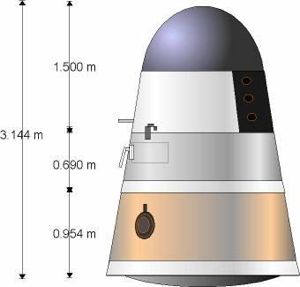
FSW-1
FSW-1 and FSW-2 Chinese recoverable spacecraft
Credit: © Mark Wade
Chinese military surveillance satellite. Reconnaissance, Earth observation satellite built by CAST, China. Launched 1974 - 1987.
AKA: Fanhui Shei Weixing;Recoverable Test Satellite. Status: Operational 1974. First Launch: 1974-11-05. Last Launch: 2006-09-09. Number: 24 . Payload: 750 kg (1,650 lb). Gross mass: 3,100 kg (6,800 lb). Height: 4.60 m (15.00 ft). Span: 2.20 m (7.20 ft).
Designed to support both military and civilian earth observation needs, the FSW (Fanhui Shei Weixing, Recoverable Test Satellite) program began in 1966, with an initial launch failure in 1974. The original FSW-0 variant completed nine orbital missions during 1975-1987 after the maiden launch failure of November, 1974. The FSW-1 model was introduced in September 1987 (five flights), followed by the FSW-2 in August 1992 (three flights).
The FSW-0 was conceived and developed in the late 1960's. It weighed about 1800 kg, and was launched by the CZ-2 booster from Jiuquan. Its normal orbit had an apogee height of 400 km, a perigee height of 200 km, and an inclination of 57 deg to 70 deg. The satellite employed three-axis attitude stabilization, and a solid-propellant retro-rocket for de-orbit prior to recovery. From 1975 to 1987, there were ten consecutive successful launches and recoveries of FSW-0. Different payloads were flown, including earth remote sensing and military reconnaissance using photographic film and CCD cameras. In 1987, during the mission FSW-9, the platform was also used as a microgravity research carrier for material science and biological science experiments. The results were promising; the microgravity level reached was 10-4 to 10-5 G during the on-orbit operation of the spacecraft.
Launched by the CZ-2C booster from Jiuquan, the FSW-1 had a blunt conical shape with a length of 3.14 m, a maximum diameter of 2.2 m, and a mass of 2.1 metric tons. The vehicle was divided into two major sections: the equipment and retro module (1.6 m long) and the re-entry module (1.5 m long). The 3-axis-stabilised FSW-1 was powered by batteries and was controlled from the Xian Satellite Control Centre. The nominal flight duration was 7-10 days. FSW-1 photo reconnaissance satellites carried imaging payloads with a high resolution (10-15 m) camera loaded with film developed on Earth after recovery and a CCD (50-m resolution) camera system for near-real-time images. The CCD imager could also be used in directing the operation of the film camera, minimizing the wastage of film if the target was cloud-covered. The maximum recoverable payload was 180 kg; the maximum non-recoverable payload 250 kg. FSW-1 made five flights from September 9, 1987 to October 8, 1993.
The FSW-2 debuted on 9 August 1992 with a launch by the new CZ-2D booster from Jiuquan. The heavier (2.5 to 3.1 metric ton) FSW-2 resembled the FSW-1 with an additional cylindrical module 2.2 m in diameter and 1.5 m long for a total length of 4.6 m. The major advantages of the newer model were an increased payload (350 kg maximum recoverable; 400 kg maximum non-recoverable) and a longer mission duration (up to 18 days). Unlike the FSW-1, the FSW-2 had a modest mono-propellant orbital maneuver capability.
A reference was made in a 1989 scientific paper of a third generation of recoverable satellites that would be 'much larger, heavier, and more advanced than FSW-2'. The new spacecraft would also incorporate more sophisticated re-entry lift techniques to improve landing precision and to lessen deceleration forces, which were as high as 20 g's for FSW capsules. This design never materialized and it may have been related to the abortive manned capsule of the late 1970's.
The FSW series seemed dead but in 2001 it was announced that China was to launch within a year the world's first 'Seeds Satellite'. The satellite would be a modified and simplified version of the FSW. Unnecessary equipment would be removed and the radiation shield modified to allow more cosmic rays to irradiate the seeds. Structural changes would be made to increase internal volume of the re-entry capsule. The satellite was to carry 300 kg of seeds of more than 1000 species. This satellite would use a standardized Recoverable Bus
This standard recoverable satellite bus replaced the three previously-used models. The bus consisted of two modules, the reentry and instrument modules, and seven subsystems: structure, thermal control, control, TC&TM, tracking, power supply and pressure control. The bus was designed for recoverable remote sensing and scientific materials for remote sensing, life science, material processing, crop breeding, and microorganism experiments.
Technical Specifications
Dimensions: 2200 mm diameter � 5144 mm long
Mass: 2800 - 3100kg
Payload capacity: 1000 - 1200 kg
In-orbit time: 15 - 30 days
Orbit inclination: 57 - 70 degrees
Perigee height: 175 - 200 km
Apogee height: 300 - 500 km
Attitude control precision: +-0.5 deg (3 axis)
Attitude stability: better than +-0.005 deg/s
Flight Experience
As of 2008, China had successfully launched 24 recoverable satellites, of which 23 were successfully recovered.
Development History
In August 1965, based on a proposed satellite development plan by Qian Xuesen, the Central Special Committee directed the Chinese Academy of Sciences (CAS) to begin implementation. Zhao Jiuzhang and Qian Ji were charged with conducting requirements analysis for recoverable satellites. Qian Ji's team toured relevant military and civilian units in order to determine applications of recoverable satellites.
Beginning in March 1966 the Chinese Academy of Sciences convened the first in a series of conferences to coordinate technology for the Chinese space program. Over two months 120 delegates reviewed plans for several series of satellites, including selection of launch sites and necessary orbits and missions. As far as was publicly known, no decision was made in regard to manned spaceflight.
The Science and Technology Commission for National Defense (STCND) instructed the CAS to conduct a forum on the results of the public meeting from May 11 to 25, 1966. China's satellite plans for the period 1966 to 1975 were presented to the involved military and civilian organizations. Zhao Jiuzhang provided the overview and Qian Ji presented preliminary plans for a retrievable satellite.
The Chinese ten-year space plan provided for initial launch of satellites with scientific experiments. However the primary effort would be applied to development of a recoverable reconnaissance satellite. The first Chinese manned spacecraft would be based on the same recovery technology. Only later would a complete system of application satellites follow (for communications, meteorology, nuclear detonation detection, early warning of missile attack, and navigation).
In June 1966 a recoverable satellite design group was formed within the Design Institute of Satellite Development (DISD). Wang Xiji was made Chief Designer for the spacecraft. He immediately began coordination of development of necessary spacecraft subsystems by various institutes.
Shortly after the conference the Cultural Revolution began in earnest. Red Guards seized the Academy of Sciences. Key Chinese rocket scientists were denounced and persecuted. Development of satellites ground to a halt. Red Guards killed Zhao Jiuzhang, Director of the Institute of Geophysics, and Yao Tongbin. Qian Ji was accused of espionage. Qian Xuesen was reduced to the status of ordinary worker. Wang Xiji was criticized when a parachute failed to open during deployment experiments for a recoverable spacecraft. Only records proving that the spacecraft was not intentionally destroyed set him free.
The extreme secrecy of the projects worked against the participants. Only after several months did Zhou Enlai intervene to put 15 key scientists in critical missile programs under state protection. The others had to fend for themselves as best they could.
Despite the incredible disruptions, it was possible to hold a workshop to finalize the design for the recoverable satellite on September 11, 1967. Wang Daheng and Tao Hong were placed in charge of development of the space reconnaissance cameras and film for the satellite.
By March 1968 the CAS Institute of Mechanics had completed the detailed analysis and tests necessary for engineering of the recoverable satellite. These included selection of the satellite's orbital trajectory; calculation of landing precision; determination of retrorocket requirements; studies of re-entry aerodynamics; selection of the external shape of the return vehicle; studies of aerodynamic drag and shear stress; and design of the heat shield. The Fourth Academy began development of the retrorocket.
By the beginning of 1970 the CAS Institute of Automation had completed work on the recoverable spacecraft's 3-axis control system. This included technology tests, simulations on analogue and digital computers, and completion of a prototype of the system. The system used sun and earth sensors for orientation and an inertial measurement unit to guide the spacecraft on maneuvers. A cold gas thruster system would orient the spacecraft to the required position for photography or retrofire.
On September 13, 1971, Mao's heir apparent, Minister of Defense Lin Biao, was killed in the crash of a Trident jet in Mongolia. The real background of the '913 Event' was obscure to this day, but Mao accused Lin Biao and his circle of planning a coup d'�tat. The response was a witch hunt of Stalinist proportions. Over 1,000 senior officials at or above the rank of army commander were purged from the military. Investigative cadres placed everyone under suspicion. One result was that the project office for the related Shuguang-1 manned space capsule was closed.
The development of the recoverable spacecraft continued at a sharply reduced pace and budget.
China launched its first recoverable satellite on November 26, 1975, four years behind the original schedule. Immediately after launch it appeared that the satellite would be lost due to a loss of pressure of the gas orientation system. Qian Huesen believed the chance of a successful recovery was nil. However Yang Jiachi calculated that the pressure loss was simply due to heating of the spacecraft during ascent followed by the cooling in space. He believed a full-duration mission was possible. Nevertheless the decision was taken to bring down the spacecraft early, after three days of flight.
Observers were deployed to the tops of 3400 m mountains to observe the descent of the capsule in Sichuan. The recovery force awaited orders. However the satellite was not seen. After some study the scientists determined that it probably landed on Chinese soil, in Guizhou.
Meanwhile, at noon in Guizhou four coal miners were sitting in the mess hall when a red-hot ball was seen to fall from the sky and crash into a grove of trees. With great apprehension they ventured out to find a blackened hulk in a pit. Finally one threw a stone at the object, which bounced off with a metallic ding. Glad to find the thing to be of human artifice, the miners reported the matter to the authorities. The recovery force eventually arrived and found the interior of the spacecraft intact - usable film was recovered.
The capsule for the FSW, like that of the US Discoverer/KH-1 spy satellite, was mounted heat shield-forward on top of the launch vehicle. The ablative impregnated-oak nose cap covered electrical equipment. The spherical aft dome contained the recovery parachute. The film reels for the camera were located in an intermediate compartment. Although later touted for use as a microgravity spacecraft, the launch and recovery conditions were not appropriate. - 6 to 11 G's vertical, 2 G's lateral and 150 dB during launch, 8 to 20 G's on re-entry, and a landing speed of 4 to 14 m/s.
The FSW-0 was equipped with a redundant flight control computer, an inertial measurement unit, and sun and earth sensors. Orientation was by a cold gas thruster system. Power came from 1300 Amp-hr / 27 V silver-zinc batteries. Flight duration was five days. Retrofire was accomplished by a spherical motor, 680 mm in diameter, 896.5 mm long. The motor provided 31.48 kN average / 40.66 kN maximum thrust for 18.5 seconds. For retrofire this provided a delta V of 340 m/s.
Spacecraft delta v: 100 m/s (320 ft/sec).
More at: FSW.
Subtopics
| Chinese Manned Capsule 1978 Chinese manned spacecraft. Study 1978. First public announcement of a Chinese manned program came in February, 1978. |
|---|
Family: Military surveillance sat, Surveillance, Surveillance orbit, Technology. Country: China. Propellants: Solid. Launch Sites: Jiuquan, Jiuquan LA2B, Jiuquan SLS, Jiuquan SLS-2. Stages: FSW Retromotor. Agency: MAI. Bibliography: 119, 2, 276, 279, 424, 5, 532, 534, 6, 11076, 12457, 12458, 12459, 12460, 12461, 12462.
Photo Gallery
 |
FSW-2Credit: © Mark Wade |
|---|
 |
Recovery of FSWRecovery of FSW unmanned reconnaissance satellite capsule. |
|---|
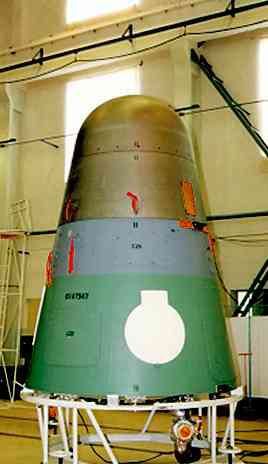 |
JB-2 |
|---|
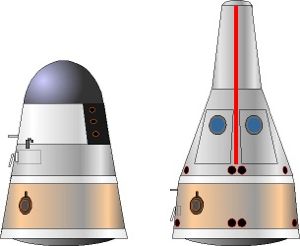 |
FSW-0 & Shuguang 1FSW-0 Recoverable satellite; Shuguang-1 conceptual drawing (based on Chinese written descripton).Credit: © Mark Wade |
|---|
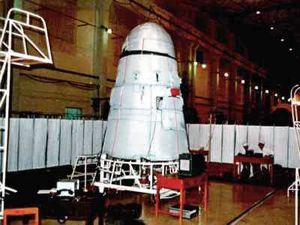 |
JB-1 in shop |
|---|
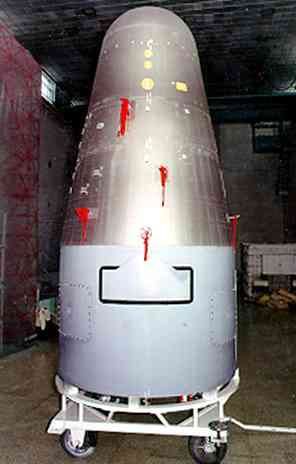 |
JB-1B in shop |
|---|
 |
FSW-1 No. 1Credit: Manufacturer Image |
|---|
 |
FSW-2 No. 1Credit: Manufacturer Image |
|---|
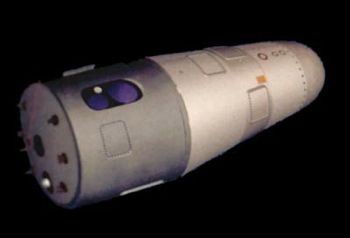 |
FSW-3 No. 2Credit: Manufacturer Image |
|---|
 |
Wang XijiCredit: China Academy of Sciences |
|---|
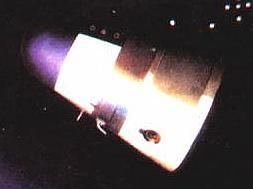 |
FSW in orbitCredit: via Chen Lan |
|---|
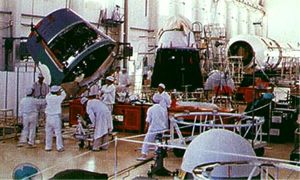 |
FSW in AssemblyFSW reconnaissance satellite in assembly. |
|---|
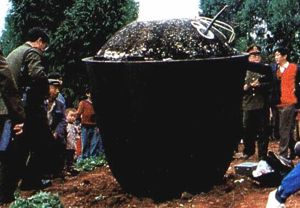 |
Recovery of FSWRecovery of FSW-17 photoreconnaissance satellite. |
|---|
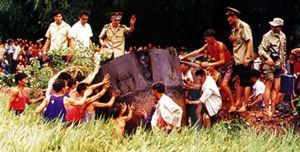 |
Recovery of FSWRecovery of an unidentified FSW reconnaissance satellite. |
|---|
1974 November 5 - . Launch Site: Jiuquan. Launch Complex: Jiuquan LA2B. LV Family: CZ. Launch Vehicle: Chang Zheng 2. FAILURE: Cable carrying pitch rate gyro signal disconnected.. Failed Stage: G.
- FSW-0 - . Payload: FSW-0 No. A. Mass: 2,500 kg (5,500 lb). Nation: China. Agency: PRC. Class: Surveillance. Type: Military surveillance satellite. Spacecraft: FSW. Decay Date: 1974-11-05 .
1975 November 26 - . 03:29 GMT - . Launch Site: Jiuquan. Launch Complex: Jiuquan LA2B. LV Family: CZ. Launch Vehicle: Chang Zheng 2C.
- FSW-0 No. 1 - . Payload: FSW-0 No. 01. Mass: 2,500 kg (5,500 lb). Nation: China. Agency: MAI. Class: Surveillance. Type: Military surveillance satellite. Spacecraft: FSW. Duration: 2.00 days. Decay Date: 1975-12-29 . USAF Sat Cat: 8452 . COSPAR: 1975-111A. Apogee: 483 km (300 mi). Perigee: 183 km (113 mi). Inclination: 63.00 deg. Period: 91.10 min.
First orbital test of Chinese recoverable photo surveillance satellite. The spacecraft was brought down early, after three days in orbit, due to problems with the attitude control system cold gas supply. Along the skirt of the return capsule some wires and instruments were burnt during re-entry and capsule impacted far from its planned landing point. However usable film was obtained from the capsule. The Chinese Academy of Space Technology organised a team to determine the cause, and improvements were made in the next spacecraft of the model. Additional Details: here....
1976 December 7 - . 04:38 GMT - . Launch Site: Jiuquan. Launch Complex: Jiuquan LA2B. LV Family: CZ. Launch Vehicle: Chang Zheng 2C.
- FSW-0 No. 2 - . Payload: FSW-0 No. 02. Mass: 2,500 kg (5,500 lb). Nation: China. Agency: MAI. Class: Surveillance. Type: Military surveillance satellite. Spacecraft: FSW. Duration: 2.00 days. Decay Date: 1977-01-02 . USAF Sat Cat: 9587 . COSPAR: 1976-117A. Apogee: 489 km (303 mi). Perigee: 172 km (106 mi). Inclination: 59.40 deg. Period: 91.10 min. Photo surveillance; film capsule recovered 9 December. First completely successful test of the FSW spy satellite. Many improvements in comparison to the first FSW orbited..
1978 January 26 - . 04:58 GMT - . Launch Site: Jiuquan. Launch Complex: Jiuquan LA2B. LV Family: CZ. Launch Vehicle: Chang Zheng 2C.
- FSW-0 No. 3 - . Payload: FSW-0 No. 03. Mass: 2,500 kg (5,500 lb). Nation: China. Agency: MAI. Class: Surveillance. Type: Military surveillance satellite. Spacecraft: FSW. Duration: 5.00 days. Decay Date: 1978-02-07 . USAF Sat Cat: 10611 . COSPAR: 1978-011A. Apogee: 507 km (315 mi). Perigee: 186 km (115 mi). Inclination: 57.00 deg. Period: 91.40 min. Photo surveillance; film capsule; capsule returned January 30. Second fully successful FSW mission..
1978 February - . LV Family: CZ. Launch Vehicle: Chang Zheng 2 Spaceplane Launcher.
- First public announcement of a Chinese manned program - . Nation: China. Spacecraft Bus: FSW. Spacecraft: Chinese Manned Capsule 1978. First public announcement of a Chinese manned program came in February, 1978. By November the head of the Chinese Space Agency, Jen Hsin-Min, confirmed that China was working on a manned space capsule and a 'Skylab' space station..
1980 January - . LV Family: CZ. Launch Vehicle: Chang Zheng 2 Spaceplane Launcher.
- Chinese astronauts in training - . Nation: China. Spacecraft Bus: FSW. Spacecraft: Chinese Manned Capsule 1978.
The Chinese press reported a visit with the Chinese astronaut trainees at the Chinese manned spaceflight training centre. Photographs appeared of the astronauts in training. Pressure suited astronauts were shown in pressure chamber tests. Other trainees were shown at the controls of a space shuttle-like spaceplane cockpit.
1980 December - .
- Work on early Chinese manned spacecraft ends - . Nation: China. Spacecraft Bus: FSW. Spacecraft: Chinese Manned Capsule 1978.
Wang Zhuanshan, the Secretary General of the New China Space Research Society and Chief Engineer of the Space Centre of the Chinese Academy of Sciences, announced that Chinese manned flight was being postponed because of its cost. Fundamental economic development was given priority.
1982 September 9 - . 07:19 GMT - . Launch Site: Jiuquan. Launch Complex: Jiuquan LA2B. LV Family: CZ. Launch Vehicle: Chang Zheng 2C.
- FSW-0 No. 4 - . Payload: FSW-0 No. 04. Mass: 2,500 kg (5,500 lb). Nation: China. Agency: MAI. Class: Surveillance. Type: Military surveillance satellite. Spacecraft: FSW. Duration: 5.00 days. Decay Date: 1982-09-21 . USAF Sat Cat: 13521 . COSPAR: 1982-090A. Apogee: 392 km (243 mi). Perigee: 172 km (106 mi). Inclination: 63.00 deg. Period: 90.20 min. Photo surveillance; film capsule recovered 14 September..
1983 August 19 - . 06:00 GMT - . Launch Site: Jiuquan. Launch Complex: Jiuquan LA2B. LV Family: CZ. Launch Vehicle: Chang Zheng 2C.
- FSW-0 No. 5 - . Payload: FSW-0 No. 05. Mass: 2,500 kg (5,500 lb). Nation: China. Agency: MAI. Class: Surveillance. Type: Military surveillance satellite. Spacecraft: FSW. Duration: 5.00 days. Decay Date: 1983-09-03 . USAF Sat Cat: 14288 . COSPAR: 1983-086A. Apogee: 493 km (306 mi). Perigee: 170 km (100 mi). Inclination: 63.30 deg. Period: 91.20 min. Photo surveillance; film capsule recovered 24 August..
1984 September 12 - . 05:44 GMT - . Launch Site: Jiuquan. Launch Complex: Jiuquan LA2B. LV Family: CZ. Launch Vehicle: Chang Zheng 2C.
- FSW-0 No. 6 - . Payload: FSW-0 No. 06. Mass: 2,500 kg (5,500 lb). Nation: China. Agency: MAI. Class: Surveillance. Type: Military surveillance satellite. Spacecraft: FSW. Duration: 5.00 days. Decay Date: 1984-09-29 . USAF Sat Cat: 15279 . COSPAR: 1984-098A. Apogee: 398 km (247 mi). Perigee: 172 km (106 mi). Inclination: 67.90 deg. Period: 90.20 min. Photo surveillance; film capsule recovered 17 September..
1985 October 21 - . 05:04 GMT - . Launch Site: Jiuquan. Launch Complex: Jiuquan LA2B. LV Family: CZ. Launch Vehicle: Chang Zheng 2C.
- FSW-0 No. 7 - . Payload: FSW-0 No. 07. Mass: 2,500 kg (5,500 lb). Nation: China. Agency: MAI. Class: Surveillance. Type: Military surveillance satellite. Spacecraft: FSW. Duration: 5.00 days. Decay Date: 1985-11-07 . USAF Sat Cat: 16177 . COSPAR: 1985-096A. Apogee: 393 km (244 mi). Perigee: 171 km (106 mi). Inclination: 63.00 deg. Period: 90.20 min. Fanhui Shi Weixing photo surveillance satellite; film capsule recovered 26 October..
1986 October 6 - . 05:40 GMT - . Launch Site: Jiuquan. Launch Complex: Jiuquan LA2B. LV Family: CZ. Launch Vehicle: Chang Zheng 2C.
- FSW-0 No. 8 - . Payload: FSW-0 No. 08. Mass: 2,500 kg (5,500 lb). Nation: China. Agency: MAI. Class: Surveillance. Type: Military surveillance satellite. Spacecraft: FSW. Duration: 5.00 days. Decay Date: 1986-10-23 . USAF Sat Cat: 17001 . COSPAR: 1986-076A. Apogee: 337 km (209 mi). Perigee: 169 km (105 mi). Inclination: 57.00 deg. Period: 89.60 min. Fanhui Shi Weixing recoverable satellite; capsule re-entered October 11 after five day mission..
1987 August 5 - . 06:39 GMT - . Launch Site: Jiuquan. Launch Complex: Jiuquan LA2B. LV Family: CZ. Launch Vehicle: Chang Zheng 2C.
- FSW-0 No. 9 - . Payload: FSW-0 No. 09. Mass: 2,500 kg (5,500 lb). Nation: China. Agency: MAI. Class: Surveillance. Type: Military surveillance satellite. Spacecraft: FSW. Duration: 5.00 days. Decay Date: 1987-08-23 . USAF Sat Cat: 18306 . COSPAR: 1987-067A. Apogee: 366 km (227 mi). Perigee: 169 km (105 mi). Inclination: 63.00 deg. Period: 89.90 min. Fanhui Shi Weixing recoverable satellite; carried microgravity experiments; return capsule recovered August 10 after five days in space..
1987 September 9 - . 07:15 GMT - . Launch Site: Jiuquan. Launch Complex: Jiuquan LA2B. LV Family: CZ. Launch Vehicle: Chang Zheng 2C.
- FSW-1 No. 1 - . Payload: FSW-1 No. 01. Mass: 2,100 kg (4,600 lb). Nation: China. Agency: MAI. Class: Surveillance. Type: Military surveillance satellite. Spacecraft: FSW. Duration: 8.00 days. Decay Date: 1987-10-04 . USAF Sat Cat: 18341 . COSPAR: 1987-075A. Apogee: 222 km (137 mi). Perigee: 181 km (112 mi). Inclination: 63.00 deg. Period: 88.50 min. Fanhui Shi Weixing recoverable satellite; return capsule recovered September 17 after eight days in space..
1988 August 5 - . 07:29 GMT - . Launch Site: Jiuquan. Launch Complex: Jiuquan LA2B. LV Family: CZ. Launch Vehicle: Chang Zheng 2C.
- FSW-1 No. 2 - . Payload: FSW-1 No. 02. Mass: 2,100 kg (4,600 lb). Nation: China. Agency: MAI. Class: Surveillance. Type: Military surveillance satellite. Spacecraft: FSW. Duration: 8.00 days. Decay Date: 1988-08-13 . USAF Sat Cat: 19368 . COSPAR: 1988-067A. Apogee: 311 km (193 mi). Perigee: 204 km (126 mi). Inclination: 63.00 deg. Period: 89.70 min. German crystal growth experiment in recoverable capsule. Results marred by hard landing..
1990 October 5 - . 06:14 GMT - . Launch Site: Jiuquan. Launch Complex: Jiuquan LA2B. LV Family: CZ. Launch Vehicle: Chang Zheng 2C.
- FSW-1 No. 3 - . Payload: FSW-1 No. 03. Mass: 2,100 kg (4,600 lb). Nation: China. Agency: MAI. Class: Surveillance. Type: Military surveillance satellite. Spacecraft: FSW. Decay Date: 1990-10-23 . USAF Sat Cat: 20838 . COSPAR: 1990-089A. Apogee: 312 km (193 mi). Perigee: 208 km (129 mi). Inclination: 57.00 deg. Period: 89.70 min. Fanhui Shi Weixing recoverable satellite; carried biological research experiments..
1992 August 9 - . 08:00 GMT - . Launch Site: Jiuquan. Launch Complex: Jiuquan LA2B. Launch Pad: LA2B?. LV Family: CZ. Launch Vehicle: Chang Zheng 2D.
- FSW-2 No. 1 - . Payload: FSW-2 No. 01. Mass: 2,500 kg (5,500 lb). Nation: China. Agency: MAI. Class: Surveillance. Type: Military surveillance satellite. Spacecraft: FSW. Duration: 15.00 days. Decay Date: 1992-09-01 . USAF Sat Cat: 22072 . COSPAR: 1992-051A. Apogee: 332 km (206 mi). Perigee: 171 km (106 mi). Inclination: 63.10 deg. Period: 89.50 min. Fanhui Shi Weixing recoverable imaging satellite; carried microgravity experiments; capsule returned August 25 after 15 days in orbit..
1992 October 6 - . 06:20 GMT - . Launch Site: Jiuquan. Launch Complex: Jiuquan LA2B. Launch Pad: LA2B?. LV Family: CZ. Launch Vehicle: Chang Zheng 2C.
- FSW-1 No. 4 - . Payload: FSW-1 No. 04. Mass: 2,100 kg (4,600 lb). Nation: China. Agency: MAI. Class: Surveillance. Type: Military surveillance satellite. Spacecraft: FSW. Duration: 6.00 days. Decay Date: 1992-10-31 . USAF Sat Cat: 22162 . COSPAR: 1992-064B. Apogee: 309 km (192 mi). Perigee: 213 km (132 mi). Inclination: 63.00 deg. Period: 89.70 min. Fanhui Shi Weixing recoverable imaging satellite; carried remote sensing, microgravity experiments; capsule recovered October 13 after 6 days in orbit..
1993 October 8 - . 08:00 GMT - . Launch Site: Jiuquan. Launch Complex: Jiuquan LA2B. Launch Pad: LA2B?. LV Family: CZ. Launch Vehicle: Chang Zheng 2C.
- FSW-1 No. 5 - . Payload: Jian Bing 93. Mass: 2,099 kg (4,627 lb). Nation: China. Agency: CASC. Class: Surveillance. Type: Military surveillance satellite. Spacecraft: FSW. Decay Date: 1993-10-28 . USAF Sat Cat: 22859 . COSPAR: 1993-063A. Apogee: 2,860 km (1,770 mi). Perigee: 181 km (112 mi). Inclination: 56.60 deg. Period: 116.50 min.
The only FSW-1 mission conducted during 1993-1994 was launched into an orbit of 209 km by 300 km at an inclination of 57.0 deg. In addition to an Earth observation Payload, FSW-1 5 carried microgravity research equipment and a diamond-studded medallion commemorating the 100th anniversary of Chairman Mao Tse-Tung's birth. The spacecraft operated normally until 16 October when an attempt to recover the satellite failed. An attitude control system failure aligned the spacecraft 90 deg from its desired position, causing the re-entry capsule to be pushed into a higher elliptical orbit (179 km by 3031 km) instead of returning to Earth. Natural decay did not bring the capsule back until March 12, 1996.
1994 July 3 - . 08:00 GMT - . Launch Site: Jiuquan. Launch Complex: Jiuquan LA2B. Launch Pad: LA2B?. LV Family: CZ. Launch Vehicle: Chang Zheng 2D.
- FSW-2 No. 2 - . Payload: FSW-2 No. 02. Mass: 2,600 kg (5,700 lb). Nation: China. Agency: CASC. Class: Surveillance. Type: Military surveillance satellite. Spacecraft: FSW. Duration: 15.00 days. Decay Date: 1994-09-13 . USAF Sat Cat: 23145 . COSPAR: 1994-037A. Apogee: 350 km (210 mi). Perigee: 207 km (128 mi). Inclination: 62.90 deg. Period: 90.08 min.
The second Fanhui Shi Weixing FSW-2 was launched on 3 July 1994 into an orbit of 173 km by 343 km at an inclination of 63.0 deg. The spacecraft remained in orbit for 15 days, making four small manoeuvres before successfully returning to Earth. The payload included Earth observation systems, a biological experiment, and microgravity research instruments. The retrievable capsule was recovered in China on July 18
1996 October 20 - . 07:20 GMT - . Launch Site: Jiuquan. Launch Complex: Jiuquan LA2B. LV Family: CZ. Launch Vehicle: Chang Zheng 2D.
- FSW-2 No. 3 - . Payload: FSW-2 No. 03. Mass: 2,600 kg (5,700 lb). Nation: China. Agency: CASC. Class: Surveillance. Type: Military surveillance satellite. Spacecraft: FSW. Duration: 15.00 days. Decay Date: 1996-12-03 . USAF Sat Cat: 24634 . COSPAR: 1996-059A. Apogee: 133 km (82 mi). Perigee: 121 km (75 mi). Inclination: 63.00 deg. Period: 87.00 min. Final launch in the FSW series. Landed in China on November 4 after 15 days in orbit..
1997 April 20 - .
- Failed FSW Launch - . Nation: China. Spacecraft: FSW.
Repeated rumours appeared that a Chinese military satellite was launched or suffered a failure on this date. The story was first carried by Reuters in May 1997. In December 2000 it was again reported in a Chinese professional magazine that China launched its last recoverable satellite on April 20, 1997. The last official launch of the series was in October 1996.
2003 November 2 - . 07:20 GMT - . Launch Site: Jiuquan. Launch Complex: Jiuquan SLS-2. LV Family: CZ. Launch Vehicle: Chang Zheng 2D.
- FSW-3 No. 1 - . Payload: FSW-18, FSW-3.1, Jianbing 4. Mass: 3,000 kg (6,600 lb). Nation: China. Agency: SAST. Class: Surveillance. Type: Military surveillance satellite. Spacecraft: FSW. Decay Date: 2003-12-18 . USAF Sat Cat: 28078 . COSPAR: 2003-051A. Apogee: 165 km (102 mi). Perigee: 141 km (87 mi). Inclination: 63.00 deg. Period: 87.50 min. Expected to have been long-awaited 'seeds in space' mission but official announcements spoke only of photography..
2004 August 29 - . 07:50 GMT - . Launch Site: Jiuquan. Launch Complex: Jiuquan SLS. LV Family: CZ. Launch Vehicle: Chang Zheng 2C.
- FSW-3 No. 2 - . Payload: FSW-19. Mass: 3,100 kg (6,800 lb). Nation: China. Agency: SISE. Class: Surveillance. Type: Military surveillance satellite. Spacecraft: FSW. Duration: 26.67 days. Decay Date: 2004-11-07 . USAF Sat Cat: 28402 . COSPAR: 2004-033A. Apogee: 547 km (339 mi). Perigee: 168 km (104 mi). Inclination: 63.00 deg. Period: 91.70 min.
Recoverable satellite officially stated to be conducting space scientific research, land surveying, mapping and other scientific experiments. Said to have improved experimental technology, with higher orientation precision and more complex on-board computers and software. Controlled from the Xian Satellite Monitoring and Control Centre. Successfully re-entered and recovered after 27 days in space at 23:55 GMT on 24 September.
2004 September 27 - . 08:00 GMT - . Launch Site: Jiuquan. Launch Complex: Jiuquan SLS. LV Family: CZ. Launch Vehicle: Chang Zheng 2D.
- FSW-3 No. 3 - . Payload: FSW 20. Mass: 3,100 kg (6,800 lb). Nation: China. Agency: SISE. Class: Surveillance. Type: Military surveillance satellite. Spacecraft: FSW. Duration: 17.78 days. Decay Date: 2004-11-09 . USAF Sat Cat: 28424 . COSPAR: 2004-039A. Apogee: 297 km (184 mi). Perigee: 205 km (127 mi). Inclination: 63.00 deg. Recoverable military satellite. Returned to Earth at 02:48 GMT on October 15, falling through the roof of a house in the village of Penglai, Sichuan province..
2005 August 2 - . 07:30 GMT - . Launch Site: Jiuquan. LV Family: CZ. Launch Vehicle: Chang Zheng 2C.
- FSW-3 No. 4 - . Payload: FSW-21. Mass: 3,100 kg (6,800 lb). Nation: China. Agency: CAST. Manufacturer: SAST. Class: Surveillance. Type: Military surveillance satellite. Spacecraft: FSW. Duration: 27.00 days. Decay Date: 2005-08-29 . USAF Sat Cat: 28776 . COSPAR: 2005-027A. Apogee: 259 km (160 mi). Perigee: 153 km (95 mi). Inclination: 63.00 deg. Period: 88.60 min. Military reconnaisance satellite, which maneuvered to raise its apogee on Aug 5 and 7 to a 166 x 552 km x 63.0 orbit; and again to the same altitude on Aug 19 after the apogee decayed to 535 km. Return capsule with film aboard recovered on 29 August..
2005 August 29 - . 08:45 GMT - . Launch Site: Jiuquan. LV Family: CZ. Launch Vehicle: Chang Zheng 2D.
- FSW-3 No. 5 - . Payload: FSW-22. Mass: 3,100 kg (6,800 lb). Nation: China. Agency: CAST. Manufacturer: SAST. Class: Surveillance. Type: Military surveillance satellite. Spacecraft: FSW. Duration: 49.00 days. Decay Date: 2005-10-17 . USAF Sat Cat: 28824 . COSPAR: 2005-033A. Apogee: 224 km (139 mi). Perigee: 178 km (110 mi). Inclination: 63.00 deg. Period: 88.50 min. Decayed 17 October 2005..
2006 September 9 - . 07:00 GMT - . Launch Site: Jiuquan. LV Family: CZ. Launch Vehicle: Chang Zheng 2C.
- SJ-8 - . Mass: 3,100 kg (6,800 lb). Nation: China. Agency: CASC. Manufacturer: SAST. Class: Technology. Type: Navigation technology satellite. Spacecraft: FSW. Duration: 14.82 days. Decay Date: 2006-11-01 . USAF Sat Cat: 29385 . COSPAR: 2006-035A. Apogee: 336 km (208 mi). Perigee: 173 km (107 mi). Inclination: 63.00 deg. Period: 89.60 min. Long delayed Seed Satellite, an experiment in which a large payload of seeds were exposed to te space environment for two weeks. The modified FSW optical reconnaisance satellite capsule was recovered in Sichuan at 02:43 GMT on September 24..
2016 April 5 - . 17:38 GMT - . Launch Site: Jiuquan. LV Family: CZ. Launch Vehicle: Chang Zheng 2D.
- Shi Jian 10 - . Nation: China. Class: Materials. Type: Materials science satellite. Spacecraft: FSW. Decay Date: 2016-04-18 . USAF Sat Cat: 41448 . COSPAR: 2016-023A. Apogee: 267 km (165 mi). Perigee: 233 km (144 mi). Inclination: 42.90 deg.
SJ-10 microgravity experiment satellite launched into low orbit. SJ-10 was based on the old FSW recoverable film-based spy satellites. The main experiment section separated and returned to Earth at the end of the mission. Shi Jian-10 microgravity satellite's reentry vehicle separated from the service module on Apr 18 at 0815 UTC and landed in China at 0830 UTC. The service module remains in a 253 x 269 km orbit, recataloged as a new object. It adjusted its orbit on Apr 22 but as of May 18 had not made further maneuvers.
Home - Search - Browse - Alphabetic Index: 0- 1- 2- 3- 4- 5- 6- 7- 8- 9
A- B- C- D- E- F- G- H- I- J- K- L- M- N- O- P- Q- R- S- T- U- V- W- X- Y- Z
© 1997-2019 Mark Wade - Contact
© / Conditions for Use